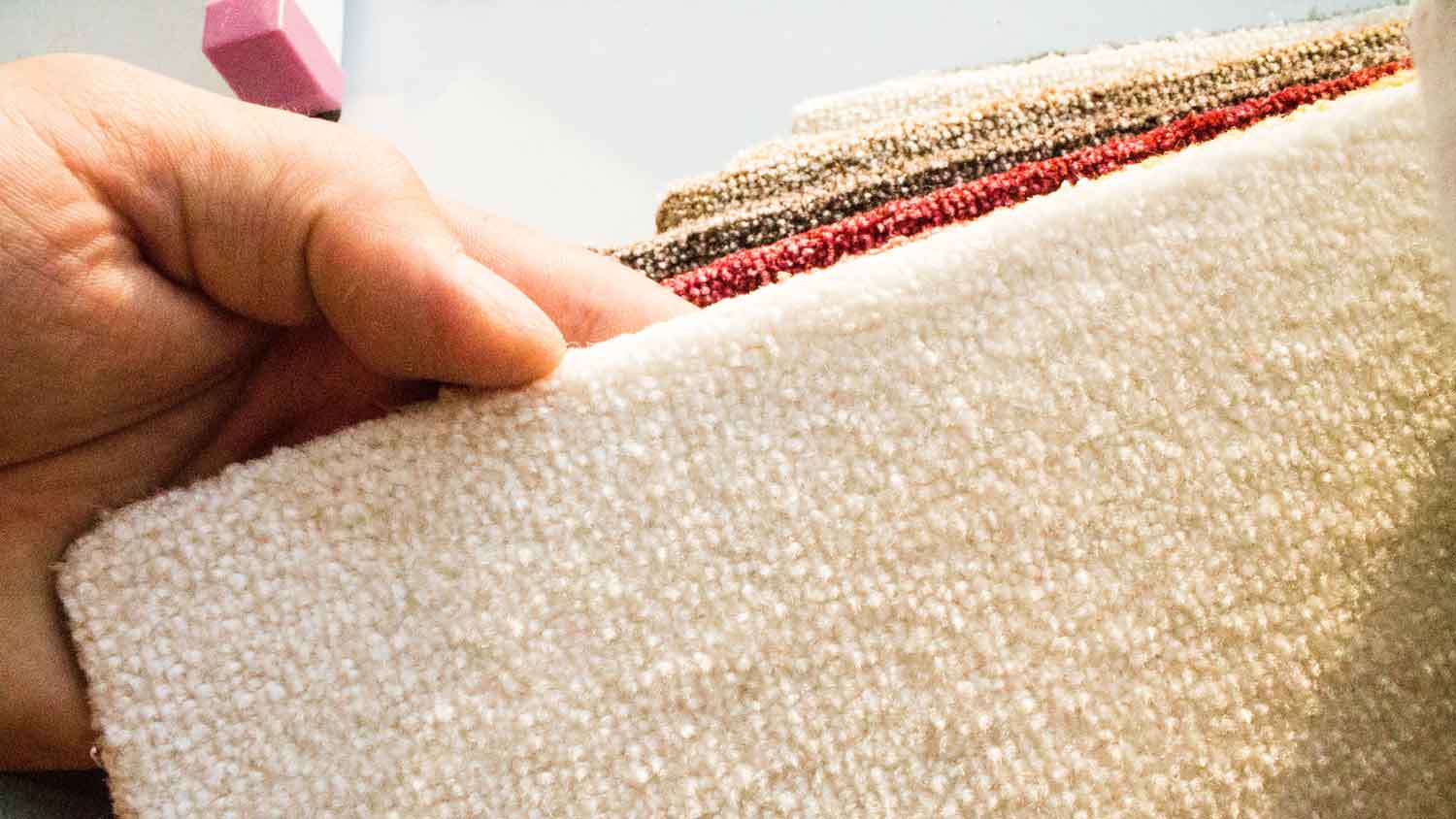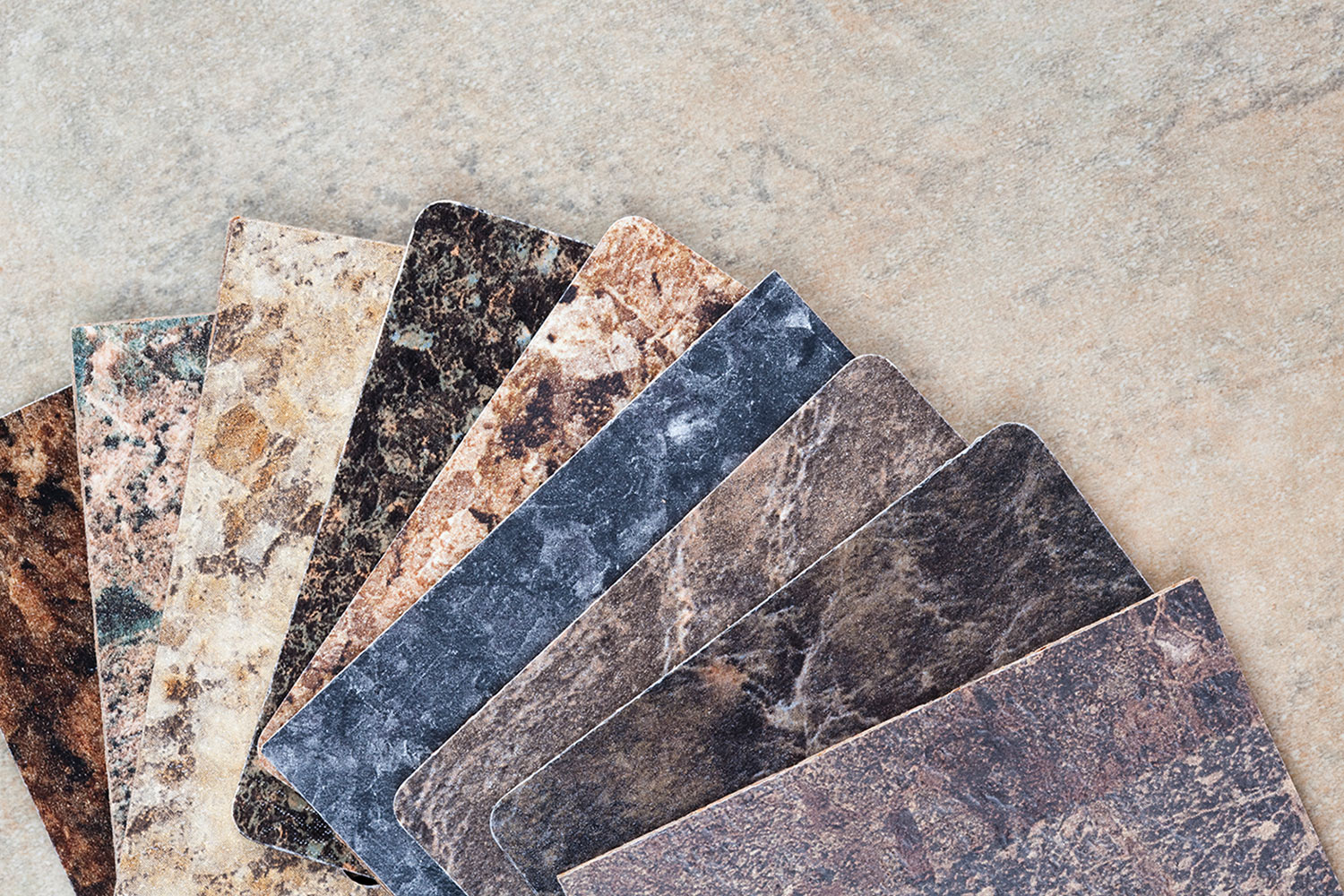
Linoleum is a popular flooring material because it’s one of the most affordable—but linoleum flooring costs vary from project to project. Let’s break it down.
Cutting laminate flooring requires the right tools and a little practice


Laminate flooring offers an affordable alternative to hardwood flooring—and it is easier to install. But it is important to understand how to cut laminate flooring properly. Once you have mastered this skill, the actual installation should go pretty smoothly, whether you are installing laminate in the kitchen, living room, or throughout the entire house.
If you cut a laminate wood board in half, you will see that it is not really wood at all. Laminate flooring, or laminated wood flooring, is a synthetic alternative to hardwood floors. It is manufactured by mixing wood fibers with resin and adhesives and subjecting them to high pressure to compress them into a strong plank. The bottom is covered with a melamine or plastic layer to protect the board from contact with the subfloor and to stabilize it. The top is covered with an image layer that creates the appearance of wood. The final, topmost layer is the protective wear layer that protects the board from moisture and daily wear and tear.
Cutting laminate properly is important because, if done incorrectly, it can crack or chip. With natural hardwood flooring, most imperfections can be sanded away or you can refinish the hardwood floor, but if the wood fiber core of the laminate flooring is revealed, it is more difficult to repair and detracts from the floor’s appearance.

Cutting laminate flooring is not complicated, and it is possible you have the right tools on hand already.
When cutting laminate flooring, certain tools are essential to get the job done right. Luckily, most of these tools are ones you probably have lying around if you have done other DIY home projects.
Tape measure
Straight edge (a speed square works well)
Pencil
Saw
Laminate flooring saw blades
A laminate flooring cutter is a tool specifically designed to cut laminate flooring. It looks similar to a paper cutter that you may remember from school or working in an office. To cut laminate flooring, slide the board under the blade and pull the handle toward you to lower the blade and cut the board. This tool is best for straight or angled cuts, though certain angles may be better cut with a compound miter saw. This type of saw is easy to move and does not require power.
A circular saw is a hand-held electric or battery-powered saw that can cut straight or angled cuts on laminate flooring. The user provides the stability and forward motion while the blade cuts through the material. This is a convenient option if you are only cutting a few boards, but it requires more work than other methods.
A compound miter saw is typically mounted on a table or on its own stand. This power saw can make standard cross cuts, but can also be turned for angled cuts. The blade can be tilted to make bevel cuts, though these are not likely needed for laminate flooring. For larger flooring jobs, a compound miter saw makes cutting laminate flooring more efficient than other tools.
A table saw has a fixed blade set into a table and is typically used to rip, or cut, boards along their length. So, if you are at the end of a room and all of the boards need to be ripped to a certain width, a table saw is the best option. This tool is not ideal for making cross cuts, so it likely will not be the only tool you use.
If you need to make small or rounded cuts that allow your laminate flooring to go around obstacles like pipes or poles, a jigsaw is the way to go. It uses a small, thin blade that moves up and down to allow for more maneuverability than other saws.
Handsaws are powered by—you guessed it—your hand. While this type of saw will cut laminate flooring, it is inefficient, but it can be used in a pinch if you just have to cut a board or two.
| Saw | Type of Cut |
|---|---|
| Laminate flooring cutter | Straight, angle |
| Circular saw | Straight, angle |
| Compound miter saw | Straight, angle |
| Table saw | Straight |
| Jigsaw | Curve |
| Handsaw | Straight |

If you are making a simple cross cut, you can use your tape measure to measure the length of the board you will need. You can also flip the board upside down and place the opposite end on the wall or stopping point. Mark where the underside of the board meets the next board. Cut the board to size, then flip it back over and install it.
To measure for irregular cuts, you will need to use your measuring tape and possibly mark the board in multiple spots. For basic angle cuts, you can choose the angle on the compound miter saw and move the blade into the correct position before cutting. For curves, you can make a paper template and then trace the correct line on the board before cutting.
If the boards are chipping when you cut them, try cutting upside down.
To cut around obstacles like posts or poles, make a paper template and trace it on the board before cutting with a jigsaw.
Make sure to choose saw blades that are specific to laminate flooring to get the cleanest cuts.
If there are rough edges, use sandpaper to smooth them before installation.
If the boards chip or get gouged during installation, you can use laminate floor putty and the stain pen that are typically included in your purchase to conceal any mistakes.
Cutting laminate flooring is a very easy DIY project, given the right tools. But chances are you are not just cutting laminate for fun; it is probably part of a larger flooring installation project, and you will have to assess whether you are up to the task or need to hire a professional.
Flooring in general can be a manageable DIY project, especially if you are using laminate. One of the appealing qualities of laminate flooring, beyond being more affordable and just as beautiful as wood, is that its tongue-and-groove construction makes it easy to install. It may take some practice to measure and cut correctly, but it is definitely a candidate for a DIY project and can help you save money on laminate flooring installation cost.
Even though this is a relatively easy project to take on, it is still time-consuming, so it may make sense to consider contacting a local laminate floor installation professional. A flooring contractor will come with all the necessary tools and skills to make the project go as quickly as possible, allowing you to enjoy your new floor faster than if you were to install it yourself.
From average costs to expert advice, get all the answers you need to get your job done.

Linoleum is a popular flooring material because it’s one of the most affordable—but linoleum flooring costs vary from project to project. Let’s break it down.

Subflooring makes your floors sturdy and level. Learn more about the cost to install plywood subflooring and factors that affect the price.

Most people wrap floor removal into a larger project, but the itemized cost to remove laminate flooring depends on the size and state of the floor.

Discover the cost to install indoor-outdoor carpet. Learn about average prices, key cost factors, and tips to save on your next flooring project.

Updated flooring can make any room in your home feel brand new. Explore flooring installation costs in Minneapolis, MN, from materials to labor costs.

Discover the true granite floor installation cost. Learn about average prices, cost factors, and tips to save on your granite flooring project.